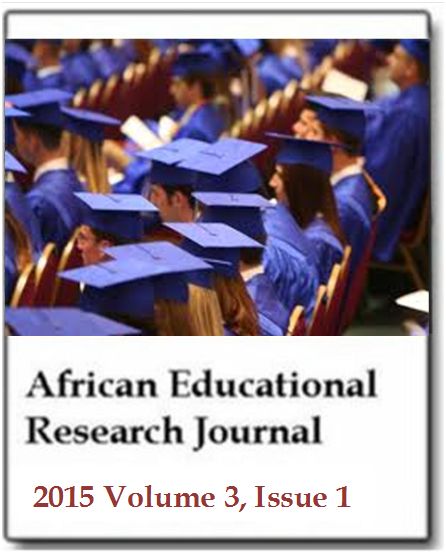The effect of Rosetta Stone (computer-assisted language learning) software on English as second language students’ proficiency in English language
Nonye R. Ikonta and Nwannediuto C. UgonnaAfrican Educational Research Journal
Published: March 16 2015
Volume 3, Issue 1
Pages 69-79
Abstract
One of the factors that indicate success in English as Second Language (ESL) classrooms is the proficiency of students in oral communication as a foundation for other language skills. The focus of language education in the 21st Century has moved from traditional knowledge of linguistic forms to using language and cultural knowledge as a means to communicate and connect to others around the globe spontaneously and synchronously. Computer-assisted language learning (CALL) is a growing sector and advocacy in the language instruction area that has huge potential for making the learning of a second or foreign language at both the receptive and productive levels easier and more accessible to teachers and students. CALL technology does not supplant teachers, rather teachers become indispensable; their role is no longer that of mere knowledge transmitters but rather approximates that of a guide or inspector of learners’ independent learning. However, though most students have high positive attitude towards the use of ICT in learning English, they are still faced with the problem of lack of proficiency in English and lack of training in ICT. The study therefore sought to determine the impact of Rosetta Stone CALL software on university students’ proficiency in English language. A pre-test was administered to a group of students before they were exposed to the CALL software in the faculty’s language laboratory. The software comprised five audio files with four thematic units each and one visual file; all these exposed participants to a variety of listening, speaking, reading and writing tasks. An observation schedule was used to monitor and investigate the students’ progress. After the intervention, a post-test was administered to the group in an attempt to determine differences in their performance by comparing their pre-test and post-test scores. After the post-test, a structured questionnaire was administered on the students to elicit answers to the research questions. Data were analysed with descriptive and inferential statistical tools such as frequency count, percentage, and t-tests. Results showed that the students’ post-test scores were significantly higher than their pre-test scores. This significant difference between the two scores was an indication of the impact of the Rosetta Stone CALL software on improving students’ proficiency in English language. Also, questionnaire responses indicated that a great majority of the participating students found the intervention process motivating and interesting, while observation revealed an increase in the students’ level of interaction and participation as they exhibited positive learning attitude towards the software. Based on the findings, recommendations are made on the need to adopt computer-assisted language learning in the teaching and learning of English language in various institutions of learning in Nigeria.
Keywords: Computer-assisted language learning, English language proficiency, Rosetta Stone software, ESL classroom.
Full Text PDF
